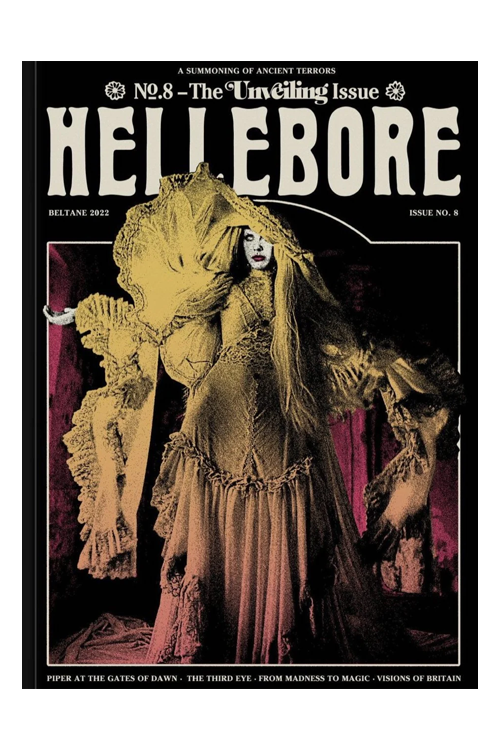
Hellebore: Issue 011 - The Animal Issue
Hares that are witches in disguise, ravens with prophetic powers, sacrificial wrens representing the god-king. Animals are often included in folk horror narratives because of their symbolic traits, or because of the folk beliefs surrounding them.

Hellebore: Yuletide Hauntings
Spectral Roman armies wading across newly built motorways, grey ladies roaming the corridors of stately homes, phantom coaches driven by headless squires. Britain is a haunted land, with layers of history crawling between the shadows.

Hellebore: Issue 009 - The Old Ways Issue
In our perceptions of landscapes we are not only informed by our senses, our knowledge, and our experience, but also by something ineffable—a link between our imagination, our inner life, and something that transcends us.

Hellebore: Issue 008 - The Unveiling Issue
The image of the veiled feminine figure— Isis, Artemis of Ephesus, Calypso— has haunted Western culture since Antiquity.

Hellebore: Issue 005 - The Unearthing Issue
For the ancients, the subterranean world was the realm of the dead; in the Medieval era it became the abode of demons. With earth we cover our dead.

Hellebore: Issue 004 - The Yuletide Special
Midwinter. The shortest day, the symbolic death and rebirth of the Sun. It is a time of darkness, but also of hope and celebration.

Hellebore: Issue 002 - The Wild Gods Issue
The notion of paganism as a wild and primitive force has exerted a huge influence on folk horror. In fiction, pagan rituals are often seen as primitive and barbarous, but also as an antidote to repression and conventionalism.

Hellebore: Issue 001 - The Sacrifice Issue
Human sacrifice is perhaps the most recurring trope in folk horror, whether it’s practised by rural communities, as seen in The Wicker Man, or part of a Dark Arts ritual, such as that of The Blood on Satan’s Claw. We’re exploring its role in some of our favourite works of fiction, its associations with megaliths and ancient pagan cults in popular culture, its power in magical thinking, and some possible archaeological evidence for it.
